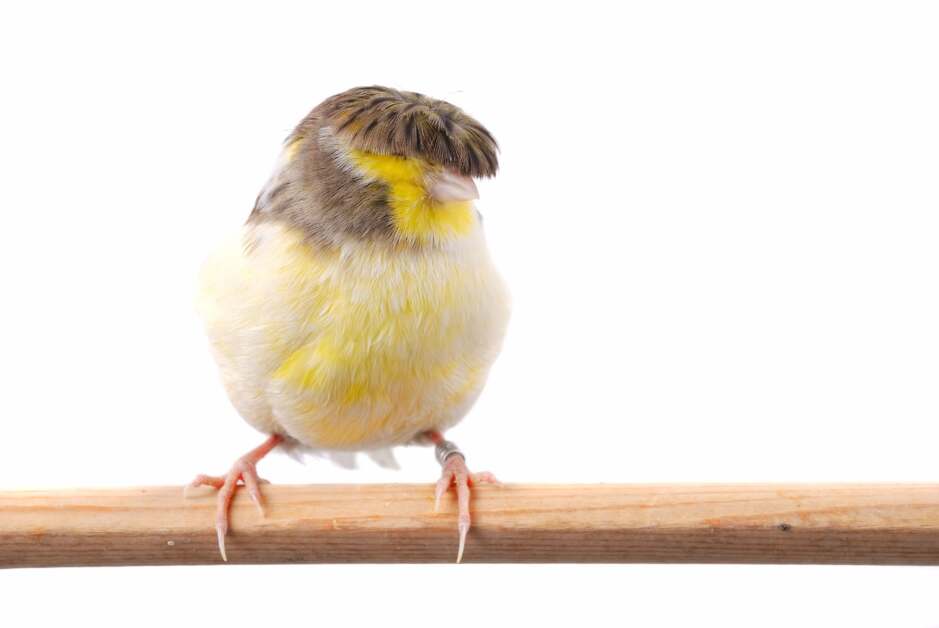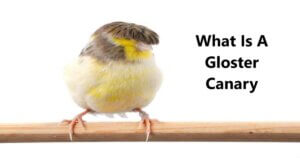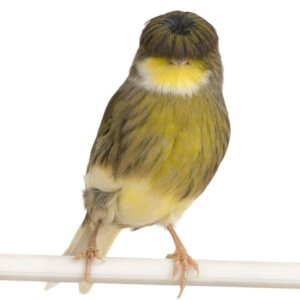Gloster Canary Bird: The Ultimate Guide to Care and Breeding
The Gloster Canary Bird is a charming and popular pet. Known for its sweet song, it brightens any home.
Originating from the Canary Islands, this bird has captured hearts worldwide. Its distinct crest and lively personality make it a favorite among bird enthusiasts. Gloster Canaries are not only beautiful but also relatively easy to care for. They thrive in a friendly environment, making them perfect for bird lovers of all ages.
Whether you’re an experienced bird owner or new to the hobby, the Gloster Canary Bird brings joy and melody to your life. Ready to learn more about this delightful bird? Let’s dive into the fascinating world of the Gloster Canary.
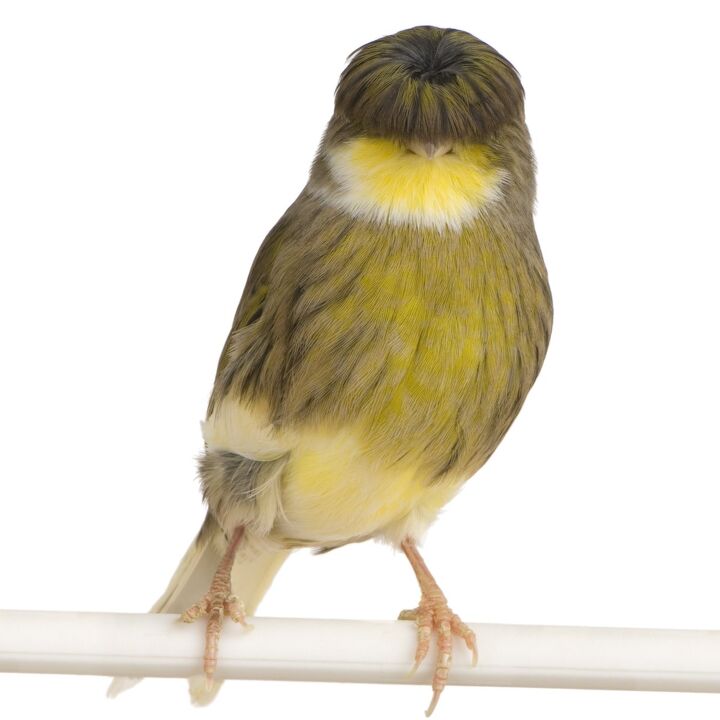
Credit: www.petguide.com
Introduction To Gloster Canary Birds
Gloster Canary Birds are small, charming creatures. They are known for their delightful songs and unique appearance. These birds are popular among pet owners and bird enthusiasts alike.
History And Origin
The Gloster Canary Bird has a fascinating history. It originated in the early 1920s. Breeders in England created this breed through careful selection. They sought a bird with a unique look and a sweet song.
These birds quickly gained popularity. By the mid-20th century, Gloster Canaries were known worldwide. They became a favorite in bird shows and competitions. Their distinctive features and pleasant demeanor made them stand out.
Distinctive Features
Gloster Canaries have several distinctive features. Their small size and round bodies are notable. They usually weigh around 20 grams and measure about 11 centimeters in length.
| Feature | Description |
|---|---|
| Size | Small, around 11 centimeters |
| Weight | Approximately 20 grams |
| Body | Round and compact |
| Color | Various, including green, yellow, and cinnamon |
One of the most striking features is their crest. Some Gloster Canaries have a round “cap” of feathers on their heads. This is known as a “corona.” Others have smooth heads, called “consorts.”
Their feathers come in various colors. Common colors include green, yellow, and cinnamon. These colors add to their appeal and make each bird unique.
Gloster Canaries also have a melodious song. They are known for their sweet, pleasing tunes. This makes them a joy to listen to.
Ideal Habitat Setup
Creating the ideal habitat for your Gloster Canary bird is essential. It ensures they thrive and stay happy. Paying attention to their living conditions can make a big difference. Let’s break down the key aspects of their habitat setup to help you get started.
Cage Requirements
Choose a cage that is spacious. Gloster Canaries need room to fly and exercise. A cage size of at least 18 inches wide, 24 inches long, and 18 inches high is ideal. Bar spacing should be narrow, around 1/2 inch, to prevent escape. Place perches at different heights. Ensure they are smooth to avoid foot injuries. Clean the cage regularly. It helps prevent bacteria and keeps the bird healthy.
Temperature And Lighting
Keep the temperature between 65°F and 75°F. Avoid drafts and sudden temperature changes. These can stress the bird. Provide natural light during the day. It helps regulate their biological clock. Ensure they get 10-12 hours of light daily. Use full-spectrum lighting if natural light is limited. It mimics sunlight and promotes well-being. During the night, a dark and quiet environment is crucial. It ensures they get enough rest and stay healthy.
Nutrition And Feeding
Ensuring your Gloster Canary Bird has a proper diet is vital for its health and well-being. A balanced diet will help them stay vibrant, active, and happy. Understanding their nutritional needs can make a big difference in their quality of life.
Diet Essentials
Gloster Canaries need a diet rich in seeds. A mix of canary seed, millet, and oats works best. Fresh fruits and vegetables are also important. Apples, carrots, and spinach are good choices. Always wash fruits and vegetables before feeding. Fresh water should be available at all times. Change it daily to keep it clean.
Supplements And Treats
Supplements ensure your bird gets all necessary nutrients. Calcium is important for strong bones and egg production. Cuttlefish bone is a great source of calcium. Vitamin drops in water can help too. Treats can be fun but should be given in moderation. Millet sprays are a favorite treat for many canaries. They provide entertainment and nutrition.
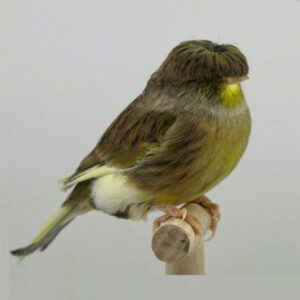
Credit: leesbirds.com
Health And Wellness
Maintaining the health and wellness of your Gloster Canary Bird is crucial. These small, charming birds require specific care. Understanding common health issues and preventive care can help keep them happy and healthy.
Common Health Issues
Gloster Canary Birds can face several health problems. Respiratory infections are frequent. Symptoms include sneezing and labored breathing. Mites are another issue. These tiny pests cause itching and feather loss. Digestive problems also occur. Watch for changes in droppings or a lack of appetite.
Preventive Care
Preventive care is essential. Regular cage cleaning helps. Remove droppings and change water daily. Provide a balanced diet. Include seeds, fruits, and vegetables. Fresh food is best. Ensure your bird gets sunlight. Sunlight aids in vitamin D production. Regular vet check-ups are important. Early detection can save your bird’s life.
Breeding Gloster Canaries
Breeding Gloster Canaries can be a rewarding experience. These small, charming birds are known for their lovely songs and unique appearance. With proper care and preparation, you can successfully breed healthy Gloster Canaries.
Breeding Preparation
Before you start, ensure you have the right environment. This includes a clean, spacious cage and proper nesting materials.
| Item | Description |
|---|---|
| Cage | Spacious, clean, and well-ventilated |
| Nesting Materials | Soft fibers, such as coconut or jute |
| Diet | High-quality seeds and fresh fruits |
Ensure your birds are healthy and free from diseases. Healthy birds are more likely to breed successfully.
Introduce the male and female birds gradually. Let them get used to each other.
Caring For Chicks
Once the eggs hatch, chick care is crucial.
- Provide a warm, safe environment.
- Feed the chicks a nutritious diet.
- Monitor their growth and health.
Chicks grow fast, so ensure they have enough food. Fresh water is also essential for their development.
As the chicks grow, they will start to explore their surroundings. Make sure the cage is safe and free from hazards.

Credit: northcarolinabirdsupply.com
Frequently Asked Questions
What Is A Gloster Canary Bird?
A Gloster Canary Bird is a small, colorful songbird known for its unique crest. They are popular pets.
How To Care For A Gloster Canary?
To care for a Gloster Canary, provide a spacious cage, fresh water, and a balanced diet. Regularly clean the cage.
What Do Gloster Canaries Eat?
Gloster Canaries eat seeds, fresh fruits, and vegetables. They also enjoy occasional treats like egg food.
How Long Do Gloster Canaries Live?
Gloster Canaries typically live for 10 to 12 years with proper care and a healthy diet.
Conclusion
The Gloster Canary is a delightful pet for bird lovers. Its cheerful singing and unique looks make it special. Caring for this bird is simple with basic knowledge. Enjoy their company and beautiful melodies. They add joy and color to any home.
Consider bringing a Gloster Canary into your life. You will love their charming presence.
Hello Dear, I'm Poli Kolymnia, owner of many birds (including budgies).
With a deep passion for these feathered companions, I'm here to share my expertise and extensive knowledge on birds care.
My articles cover essential topics like diet, housing, care, and health, providing practical tips to help you create a happy and thriving environment for your birds.

